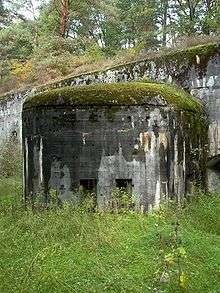Western Russian fortresses

_(2).jpg)
During the 19th century, the Russian Empire built a system of permanent fortifications along its Western border, consisting of a chain of fortresses controlling strategic locations. Its purpose was to enhance Russia's military strength versus Prussia (later Germany) and Austria-Hungary.
During 1830-1831 the Russian Empire under the rule of Nicholas I crushed the Polish November Uprising against Russian authority and abolished the constitution of the Kingdom of Poland, which until then maintained a large degree of autonomy.
To maintain secure control over the lands of Congress Poland, now under direct Russian rule, and to suppress any future revolts that might occur here, Nicholas I assigned his prominent military engineers to design a reliable system of fortifications in this part of Europe. The endorsed project included construction of new fortifications and reconstruction of the old fortresses within 10–15 years.
The project included 3 lines of fortresses:
- the first line, called the Defense line of the Kingdom of Poland, crossed Poland north-south, comprising the Modlin fortress, the Warsaw Citadel, the fortress in Ivangorod (presently Dęblin),
- the second line along the Bug River included Brest-Litovsk fortress,
- the third line was running north-south over 1000 km east of the first one across the present-day Latvia, Belarus and Ukraine, it comprised Dinaburg fortress in Dvinsk, today Daugavpils, Babruysk fortress, Kiev fortress.
Due to the high costs the construction or reconstruction of some fortresses took much time and were not completed, besides rifled artillery with longer range and greater accuracy and explosive shells of greater destructive power demonstrated the vulnerability of existing permanent fortifications, when the French cities of Metz, Sedan, and Paris were taken during the Franco-Prussian War of 1870-71.
